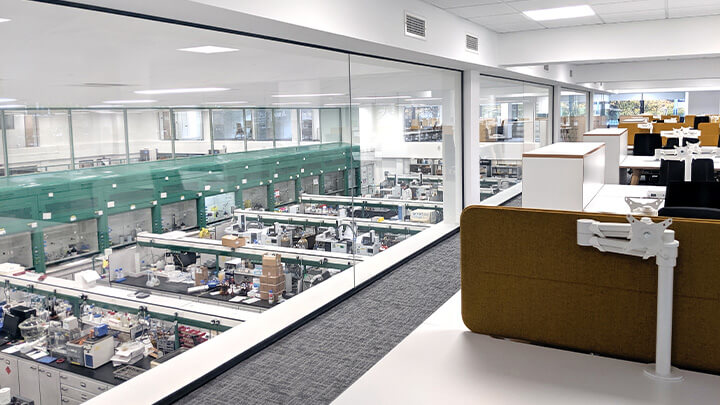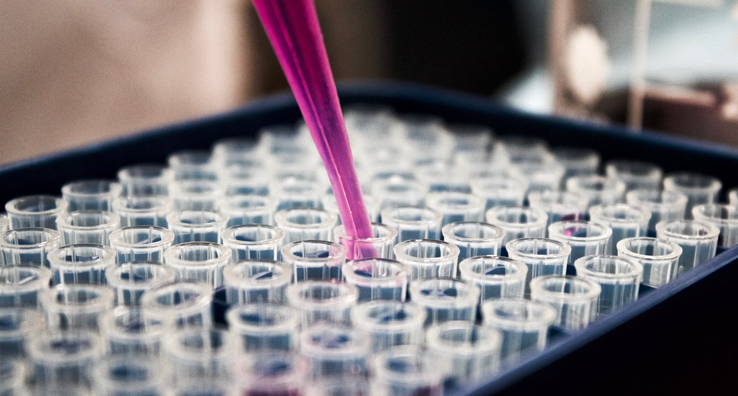Physicochemical properties of protein therapeutics, determined in line with ICH Q6B, EMA and FDA guidelines including molecular weight, isoform, electrophoretic, chromatographic and spectroscopic profiles
Determination of the physico-chemical properties of proteins allows the relevant specifications to be established during the development of therapeutic product. Understanding the physicochemical properties of a biologic also supports drug development and ongoing quality control. A range of methods and technology are required to determine these properties for your specific protein - the challenge is to select and adapt the most appropriate technical approaches for the product in question.
Our scientists deliver protein analytical programs in line with Appendix 6.1.2 in the ICH Q6B guidelines: Test Procedures and Acceptance Criteria for Biotechnological/Biological Products. These programs are designed to optimise the data required to determine or confirm identity, explore patterns of heterogeneity and demonstrate consistency in quality for the drug. We are adept at method development and conduct phase-appropriate validation of methods where required.
We apply our Total Quality Assurance expertise to developing, validating and conducting physicochemical testing programs that can expedite your protein characterisation programs, helping you to meet your development and submission milestones.
Molecular Weight
We determine the exact molecular weight of proteins using high-resolution mass spectrometry (Orbitrap, QToF). We can also apply a range of other techniques such as MALDI, size exclusion chromatography (SEC), SDS-polyacrylamide gel electrophoresis (under reducing and/or non-reducing conditions).
Isoform Pattern
Isoform pattern and impurity studies are conducted mainly using Imaged Capillary Isoelectric Focusing (icIEF) but also chromatography and traditional gel / capillary electrophoresis methods (CIEF, IEX, CZE and SDS-PAGE).
Extinction Coefficient (Molar Absorptivity)
Our protein scientists accurately determine the extinction coefficient using UV/visible absorbance on solutions of the product which have a known protein content. We quantify the concentration of protein in solution using amino acid compositional analysis, either by using an amino acid analyser (AAA) or UPLC instrumental approaches.
Electrophoretic Patterns
Electrophoretic patterns and data on identity, homogeneity and purity can be obtained by polyacrylamide gel electrophoresis, capillary isoelectric focusing (CIEF /iCIEF), SDS-polyacrylamide gel electrophoresis, Western-blot or capillary electrophoresis.
Liquid Chromatographic Patterns
Using size exclusion chromatography (SEC), reverse-phase liquid chromatography (RP-HPLC), ion exchange liquid chromatography (IEX), or UPLC approaches we generate chromatographic patterns and data on the identity, homogeneity, and purity.
Spectroscopic Profiles
The higher-order structure is examined using far and near-UV circular dichroism (CD), nuclear magnetic resonance (NMR), infrared (FTIR), intrinsic fluorescence studies or ultraviolet-visible (UV-vis) spectroscopy (second derivative) spectroscopy. Our biophysical characterisation suite of technologies also includes protein aggregation studies through dynamic light scattering, SEC with multi-angle laser light scattering (MALS) and sedimentation velocity analytical ultracentrifugation (SV-AUC).
Protein Quantity
We provide a range of total protein quantification methods, including European Pharmacopoeia (EP) and United States Pharmacopeia (USP) methods. Colorimetric assays such as the Bradford or bicinchoninic acid (BCA) assays measure UV-light absorbance and can be used to calculate protein concentration from the absorbance measurement, once the extinction coefficient (molar absorptivity) has been accurately established. We also provide quantitative amino acid analysis by high performance liquid chromatography (HPLC) or ion chromatography (IC).
4th Annual Inhaled & Nasal Biologics | DNA Forum
25-25 September 2025
Cambridge, UK
Join us for a ground-breaking and insightful forum on inhaled and nasal biologics development: Two days of cutting-edge talks and networking opportunities with leaders in this complex area of inhaled medication and inhaled vaccine development.
LEARN MORE & REGISTER


Intertek Pharmaceutical Services Manchester
P.O. Box 42
Hexagon Tower
Blackley
Manchester, M9 8ZS
United Kingdom
For location use: M9 8GQ
DISCOVER MORE
Download our latest online resources
SPECIAL REPORT: Peptides Therapeutics: Designing a Science-Led, Strategic QC Program
ARTICLE: Meeting Regulatory Expectations for Biosimilar Development
WEBINAR: Monitoring Glycosylation using Site Specific Approaches
WEBINAR: Current Analytical Approaches to Biophysical Characterisation
ARTICLE: Characterisation of Bispecifics
SPECIAL REPORT: Biophysical Characterisation of Biologics
ARTICLE: mAbs - Characterising Critical Quality Attributes
ARTICLE: New Approaches to Bioassay Design
WHITE PAPER: GMP Flow Cytometry - Applications, Considerations and Challenges
ARTICLE: Significance and Challenges of Inhaled and Nasal Biologics
ARTICLE: Physicochemical Properties of Liposomal Advanced Drug Delivery Technologies

Pharmaceutical News & Events
- PRESS RELEASE: Lab expansion to enhance capabilities in inhaled biologics drug development
- PRESS RELEASE: Intertek partners with CrystecPharma to advance formulation science and accelerate development for dry powder inhalers
- NEW! Blog: Optimising Quality in Pharma Supply Chains
- Determination of Particles in Pharmaceuticals - Article
- Discover our Audit Live Tool for direct access to our scheduled audits
- Extractables/Leachables Lab Tour - Request access
- Medical Device Extractables & Leachables Studies
- Glycosylation Analytical Approaches for Antibody Therapeutics
- Rapid Determination of Low/Trace Level Benzene in Pharmaceutical Excipients and Finished Products
